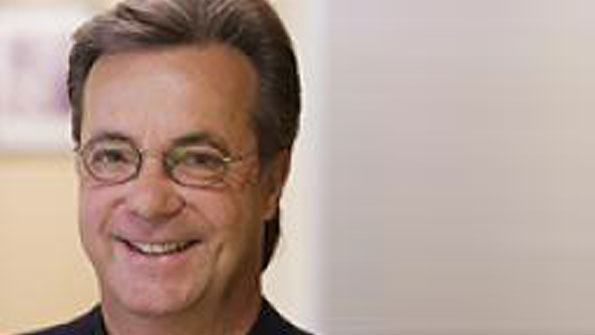Imagine the spectrum possibilities …
I think it’s time once again that the FCC’s Wireless Telecommunications Bureau and the Public Safety and Homeland Security Bureau revisit the process by which public-safety entities are provided access to Industrial/Business spectrum under the premise that there are no public-safety frequencies available.
I think it’s time once again that the FCC’s Wireless Telecommunications Bureau and the Public Safety and Homeland Security Bureau revisit the process by which public-safety entities are provided access to Industrial/Business spectrum under the premise that there are no public-safety frequencies available. I grant you that some bands are not optimal from an infrastructure standpoint. For example, 700 MHz and 800 MHz are not the first, second or third choices of public-safety organizations that want to cover large rural areas or those that need coverage in remote areas. In some cases, state planning committees have band usage all identified and organized for years to come, which takes spectrum that might otherwise be available today off the table. The result is that pressure is placed on the VHF (150-174 MHz) and UHF (450-470 MHz) public-safety bands.
In the I/B spectrum-use world, only 470, 800 and 900 MHz channels are made available, almost always on an exclusive basis, and it isn’t complicated at all for a coordinator to know whether a channel is available for certification. For other than a “short-spaced” application, a channel is available for licensing based on an FCC-defined minimum separation from incumbent transmitter sites specified in the rules. Okay, Sprint-vacated channel coordination at 800 MHz has proven to be somewhat problematic, but the FCC did the right thing recently after a number of mutually exclusive applications were filed, by returning all of them and giving the affected applications and coordinators a restart.
So the workhorse bands for both I/B and public safety remain those limited allocations at VHF and at UHF. The FCC rules are clear for both I/B and public-safety applicants: Exclusive-use channels are available only for centralized and hybrid trunked systems, not conventional systems. Exclusive-use channels are identified following analyses of predicted service and interfering contours to both co-channel and adjacent-channel incumbent systems. If there is no contour overlap, channels in a trunked system may be assigned on an exclusive basis. If there are no exclusive channels available, then the rules require cooperation among the licensees on shared channels. It’s a pretty simple process.
However, public safety’s frequency-advisory committees take it to another level and require letters of consent from incumbent users before shared channels are certified. I have never quite figured out the purpose of letters of consent on shared frequencies. They can be used to secure exclusive use of channels in trunked systems when there is a contour overlap, but there are no rules requiring letters of consent for conventional or trunked system operations on shared channels. They don’t guarantee any rights or provide protection to anyone. Maybe the benefit is that everyone knows who is coming or going on a frequency, but that information can be provided at any time.
To be clear, EWA doesn’t care if the public-safety community practices this policy, until it impacts I/B channel availability. An inability to obtain such letters, or the delays that can result from trying to get them, should not be used as the justification for a waiver to access I/B spectrum on a shared basis. Not only does this deplete the already limited I/B pool of channels, but I/B and public-safety users should not share channels—ever. If any sharing is to take place, it is far better for all that public-safety users share with one another exclusively.
If a public-safety coordinator seeks to share I/B channels on behalf of its customer, the supporting spectrum analysis should provide substantive evidence that there are no public channels that can be shared. Period. It simply is not sufficient to state “There are no public safety channels available,” an assertion that may mean only that the applicant has been unable or unwilling to get the necessary letters of consent for a shared public-safety channel.
On the flip side, if an I/B coordinator isn’t willing to review the public-safety coordinator’s analyses and independently conduct a review of potentially available, but shared, public-safety channels, then that I/B coordinator should not be permitted to provide concurrence to such requests. “It looks good to me” isn’t good enough. I thought representing the interests of the user community you are purporting to serve was a requirement of being an I/B coordinator.
Just maybe there is a light at the end of the tunnel. In a recent Order issued by the FCC in a public-safety licensee spat (see DA 13-1419), the FCC stated, “We note that frequency 151.025 MHz is available for shared use and the Commission’s rules do not provide ‘first-in-time preference’ to current users of shared channels. In fact, Section 90.173(a) of the Commission’s rules explicitly states that ‘[e]xcept as otherwise specifically provided in this part, frequencies assigned to land mobile stations are available on a shared basis only and will not be assigned for the exclusive use of any licensee. In this instance, EMTA has no exclusive rights to frequency 151.025 MHz. Furthermore, both EMTA and Allegany County are eligible to be licensed on this frequency pursuant to Section 90.20 of the Commission’s Rules.”
Incredible. I had to pick myself up off my office floor. Imagine the spectrum-efficiency possibilities.
Mark Crosby is president and CEO of the Enterprise Wireless Alliance.


















